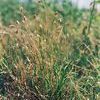Personal Shopping List
The following plants have been added to your shopping list. You can continue to browse our plants to add more plants, or you can generate a printable version. Homeowners, please bring in your print out and we'll help you find the plants you have selected. Landscapers who purchase from the Prairie & Wetland Center can attach this list to help differentiate your proposal from your competitors.

|
Buchloe dactyloides
Common Name: Buffalo Grass
Buffalo grass is a warm-season, native, perennial shortgrass. It is a dominant grass of the shortgrass prairie west of the Midwest and is commonly found on overgrazed uplands in our region. It has both stolons and rhizomes and the male and female flowers are produced on separate plants. It has a round hollow stem with gray, green curly leaves.
In winter, Buffalo Grass turns tan and in the autumn it turns lavender. Greenup comes in mid-sping. It is very drought resistant. In dry seasons it gets brown, and stops growing, and goes dormant. It is also heat and cold resistant.
Buffalo grass has both male and female plants. The flower stalks are 4 to 8 inches (10-20 cm) tall The female seed head of buffalo grass grow in clusters of three to five hairy spikelets. The tiny clusters of yellow to golden male flower of buffalo grass grow about 2 inches (6 cm) above the blades. The burs on buffalo grass seeds don't cling to animal fur for very long and the seeds fall close to the parent plant.
Buffalo grass sends out many thin roots that can reach 5 feet below the ground, forming a dense sod. Seventy percent of the roots are in the first 6 inches (15 cm) of soil. Buffalo grass also reproduces through stolons.
|
Height: 2-5 Inches
Spread: 6-12 Feet
|

